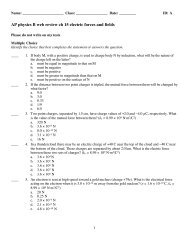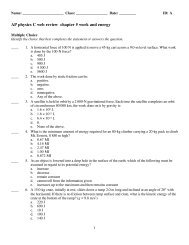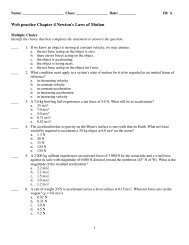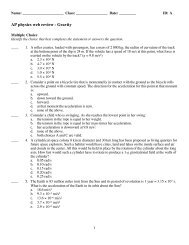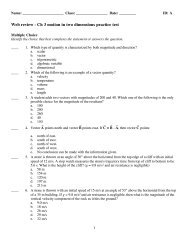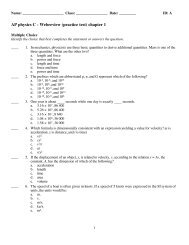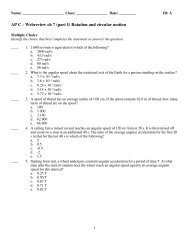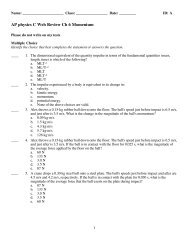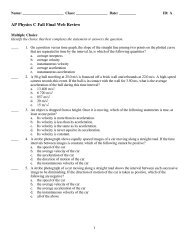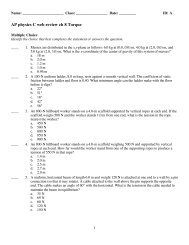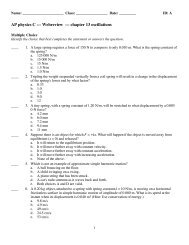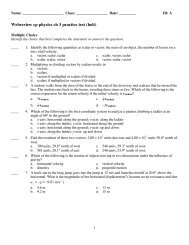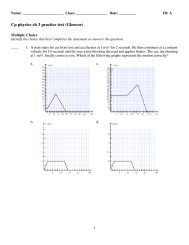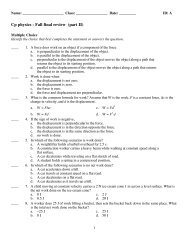AP Physics
AP Physics -â Static Electricity - Planet Holloway
AP Physics -â Static Electricity - Planet Holloway
Create successful ePaper yourself
Turn your PDF publications into a flip-book with our unique Google optimized e-Paper software.
Insulators are non-metals; materials like plastic, rubber, ceramics, &tc. These substances have their<br />
electrons tightly bound in their chemical bonds. The charge can’t go anywhere in these substances<br />
because there’s nothing to carry the charge. The electrons are not free to move, don’t you see.<br />
When a charge is placed on an insulator, the charge stays where you put it. When a charge is placed<br />
on a conductor it will immediately spread out over the entire object (actually, as we shall see, it<br />
travels to the outer surface of the conductor).<br />
Electrolytes are liquid solutions that can conduct electricity. The electrolyte contains ions that<br />
transfer charge.<br />
Charging Objects: There are two methods that can be used to charge objects; charging by<br />
conduction and charging by induction.<br />
Charging by conduction is very simple. An object is given a charge – we rub a rubber rod with a<br />
rabbit fur. The rod now has a negative charge. We also have a metal sphere attached to an<br />
insulated stand. We touch the sphere with the charged rod and some of the extra electrons on the<br />
rod will flow onto the sphere, giving it a negative charge. A common way to transfer charge by<br />
conduction is through the use of a small metal disc attached to an insulated rod. This device is<br />
called a proof plane (the <strong>Physics</strong> Kahuna has no idea why). When it is touched to a charged object<br />
it gains the same charge by conduction. This charge can then be transferred to some other object or<br />
tested.<br />
Charging by induction is a bit more complicated. We start out with a charged object and an<br />
uncharged object. Charge is transferred, but there is no physical contact between the two objects.<br />
There are two ways to do this. Let’s look at the first method. We have a negatively charged rubber<br />
rod and an insulated metal sphere. You cannot charge an insulator by induction, the method works<br />
only with objects that have conductive surfaces.<br />
1. Bring the charged object near the insulated sphere. The sphere is electrically neutral –<br />
same number of electrons as protons, duh. The negative charge on the rod will repel the<br />
free electrons on the sphere’s surface, however. They will collect on the opposite side of<br />
the sphere from the rod - they’re trying to get as far away from the negative charge on<br />
272



